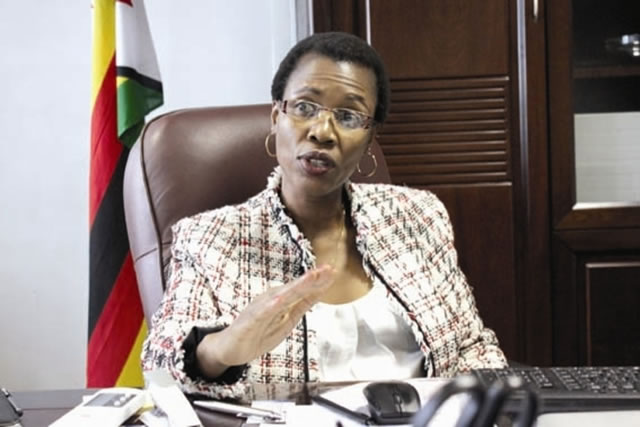EDITORIAL COMMENT: Connecting farmers, processors leads to growth

The development of rural areas, especially when this is based on smallholder farming and boosting the incomes of smallholder farmers, requires imagination, innovation and some very practical ideas and businesses.
We are seeing this in Mwenezi, a semi-arid area largely ignored in the past, where quite a lot of the requirements are being put together to ensure that the people there can earn decent livings.
The latest comes from a very practical NGO that wants to eliminate poverty, Sustainable Agriculture Technology.
The NGO has already put in a lot of work in Mwenezi and Chiredzi, is expanding the opportunities for the small-scale farmers to earn a living, and now is moving into paprika, a mild pepper spice. The plan is for a processing plant in Rutenga, the administrative centre of Mwenezi district, fed by the output from around 1 500 households producing the paprika peppers on modest irrigated plots.
This is a way to improve rural incomes, not just trying to produce more of traditional crops or upgrade livestock farming, but also opening up new opportunities so that farmers have some additional strings to their bow.
There will not be any pure paprika farmers, producing nothing else, but rather 1 500 families who are already reasonable farmers producing paprika as an additional crop, and so an additional stream of revenue.
Since the crop is less seasonal than most it will also produce a regular income for these families and sometimes money every month is exceptionally desirable, augmenting the seasonal income when other harvests are brought in.
The processing plant may be just the first stage, drying and preparing the paprika for sale with bulk packaging, but SAT or some go-ahead business person could take it further. Some users of paprika, for example, like the whole dried pepper, which then needs to be of exceptional quality with a premium price, while others are happy to have the flakes or ground spice they need for actual cooking.
In a way this fits in with the other Rutenga industries, the modern abattoir being built and the processing of mapfura/marula wild fruit.
The abattoir makes sense in what is traditionally ranching and cattle country, and means there is a market closer to far more farmers who will no longer have to sell to a dealer or go through all the paperwork and expense of transporting cattle long distances to markets.
The mapfura fruit is harvested once a year, in what can be considered a slack period in the farming seasons, so with a guaranteed market for each bucket full is yet another source of income for many families.
Now the National Biotechnology Authority of Zimbabwe is getting ready to apply for up to 10 000ha of land to have plantations of the trees near the town to build up the harvest, keeping the wild fruit but adding over the years plantation additions.
The interesting point is that Rutenga is already moving fast from being just the common small administrative, shopping and service centre, but also becoming an industrial centre, specialising in agro-industrial processing of what the farmers around it are producing or harvesting.
The Mwenezi Rural District Council certainly sees this as the way forward and is willing to work closely with anyone wanting to boost this aspect, with its additional markets for the farmers and its additional jobs for the growing number of urbanites.
Shopkeepers and service sector businesses come automatically into most growth points or district administrative centres, and just need to be able to buy stands and build. Industrial concerns need more encouragement along with innovative investors.
This is largely what the Government commitment to rural industrialisation means, not so much moving a factory into a rural area, but building up the industries that buy and process what local farmers and miners produce, and, as is the case with the paprika business now being set up, link up with the farmers so a new crop is produced.
This is one of those businesses that can only work when there is a market for the farmers, and the business cannot be established until it knows that the farmers will grow what is needed. It needs both to work together to set everything up in the first place.
The expansion of crops for farmers is important.
Smallholder farmers who are successful, with reasonable incomes, will need a swathe of income sources, rather than be some sort of monoculture specialist.
We already see this in some areas where a farmer growing in prosperity produces, in season, tobacco, maize, oilseed and cotton, plus some livestock.
And if the farmer is close to a market and has some irrigation, adds fresh vegetables to the mix.
Local processing, adding value as the mining industry puts it, can really boost incomes. When you go round small-scale farming areas in some highly industrialised countries, France or Italy for example, you will notice both the variety of crops grown, with every hectare of a small farm fully used and often a different crop is grown on each hectare, plus the local processing, sometimes on the farm and sometimes in the nearest small town.
Even in Zimbabwe we have seen this.
In the 1930s, in the wake of the Great Depression, a redundant man with some ideas, noticing that oranges were cheap when harvested, spent hours in his kitchen over a stove perfecting a recipe for what became and remains Zimbabwe’s best known brand of orange squash.
There is even a diminishing number of very elderly Zimbabweans who still believe that the product from his small factory was superior to what now comes out of a major conglomerate, although that is likely to be driven by nostalgia for a long-ago childhood.
But the idea of local processing of local products near where they are produced is the important point, coupled with people ready to innovate and experiment and create the necessary value chain between farmer and factory.











Comments